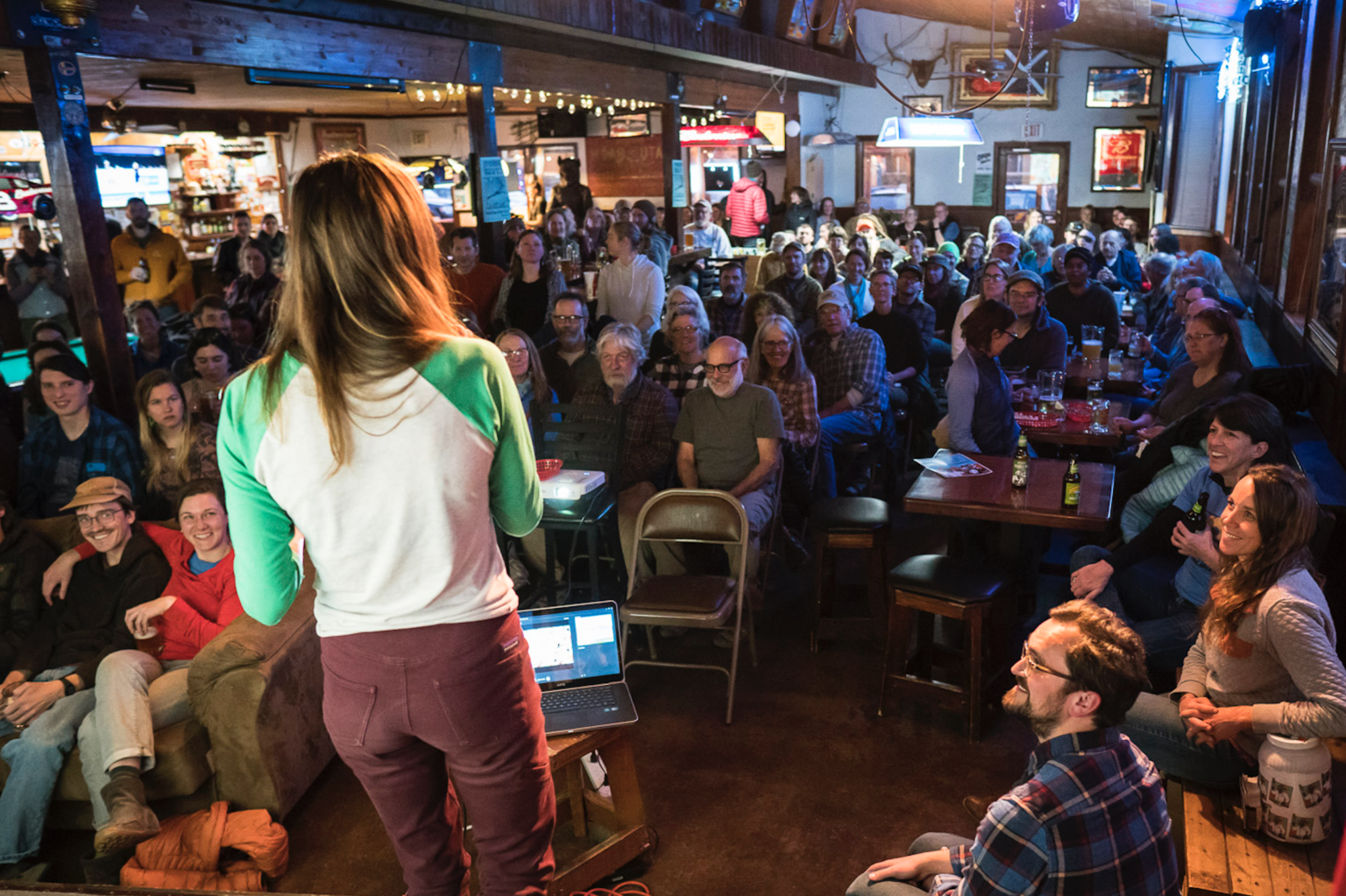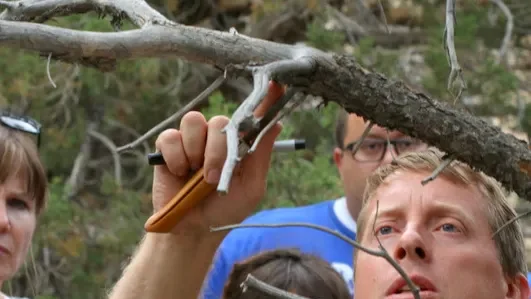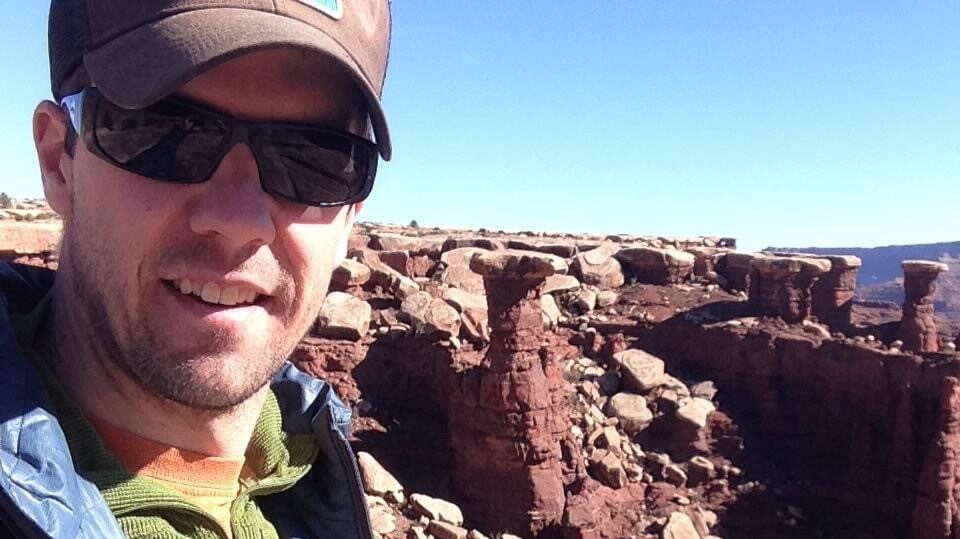Some information may be outdated.
Ecologist Dr. Kristina Young crouches down on a patch of slickrock somewhere in the Colorado Plateau, her nose about a foot away from the desert floor. She points to a patch of bumpy, black dirt.
“Four different species of lichen here,” she says as piano music plays in the background.
Young, a researcher for the USDA and board chair of Science Moab, is featured in a 10-minute film titled “From Biocrust, with Love,” along with John Watson, the co-owner and founder of the bike industry website The Radavist. The film follows the pair as they bikepack across the plateau in search of biocrusts and dives into how those recreating around Moab can take better care of the desert.
Biocrusts are fragile communities of living organisms—such as mosses, cyanobacteria, lichens, algae and microfungi—that form a web along the ground of dryland ecosystems. These communities play an important role in keeping the Colorado Plateau (and other drylands) healthy; they hold the soil in place, capture carbon, retain moisture and cycle nutrients. Young likens the biocrusts to forest ecosystems in their diversity.
“Often when you’re looking out over a desert landscape, the most biodiversity, and the most going on, might just be in that soil layer,” she says. “People think of vegetation and plants as these really foundational parts of an ecosystem. In these dry places, biocrusts are about just as important as plants because they cover so much of the area.”
But these unique communities are incredibly sensitive to disturbance. Just one footstep, hoofstep or vehicle track can break the biocrust net, exposing the sand held in place underneath. The natural recovery time of biocrusts varies widely from several decades to millennia to repair, depending on the severity of damage and location.
It may seem counterintuitive, but deserts like those around Moab aren’t “naturally dusty,” Young explains in the film. Instead, they become dusty when biocrusts are disturbed.
“The Dust Bowl of the 1930s is a prime example of people coming out West from the East and thinking that these places could be heavily grazed and not turn into giant dust storms,” she says. “They were wrong.”
When dust blows across the landscape, it can have far-reaching consequences, including accelerating snow melt in the mountains. And as humans disturb more and more of the land, the desert struggles increasingly to restabilize. The film illustrates how these processes are connected using wide drone shots of the vast desert followed by close shots of the tiny biocrusts.
“The idea there was to really play with scale,” Young explains. “So you have this biocrust scale and then you have this regional landscape scale. And the hope is that the film connects those two things. Biocrust might be small, but disturbing it actually has large regional impacts.”
Director Sinuhe Xavier originally planned for the movie to follow Young and Watson on a continuous journey starting in Green River and ending in Moab. But on their second day, they were caught in an unexpected spring snowstorm.
“We had to bail,” Young says. “We just did not have the gear for inches of snow. And so we ended up doing the riding in a few pieces, and felt that telling the story was more important than a true bikepack.”
The movie is intended not only for bikers, but for everyone who goes outside and uses public lands.
At the end, it shares advice for how to “shred lightly,” including staying on designated trails, always assuming biocrust is present, camping and resting on hard surfaces and leaving the landscape unaltered.
Young emphasizes that outdoor recreation is good for our mental and physical health, but it is still a disturbance to local ecology.
“You have to balance your enjoyment with caretaking these places,” she says. “I just think that we all have the capacity to just be a little bit better.”
Appreciate the coverage? Help keep local news alive.
Chip in to support the Moab Sun News.





